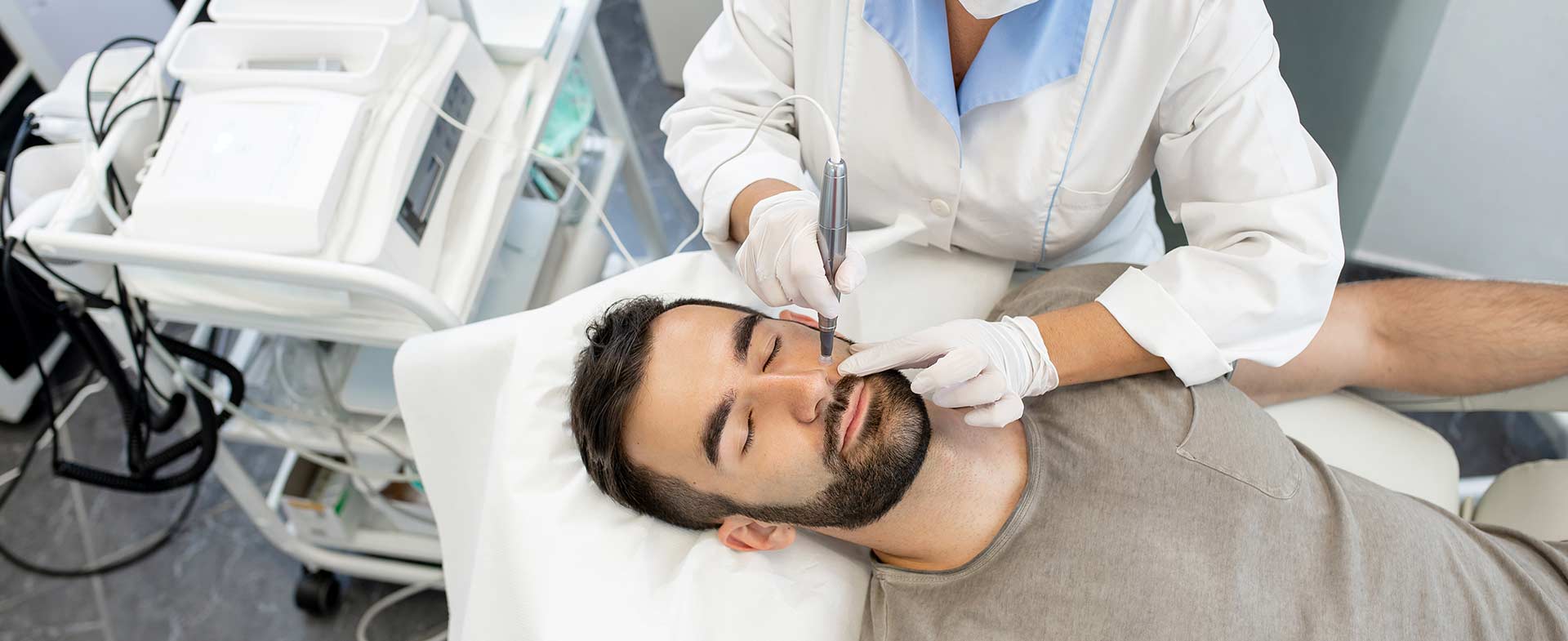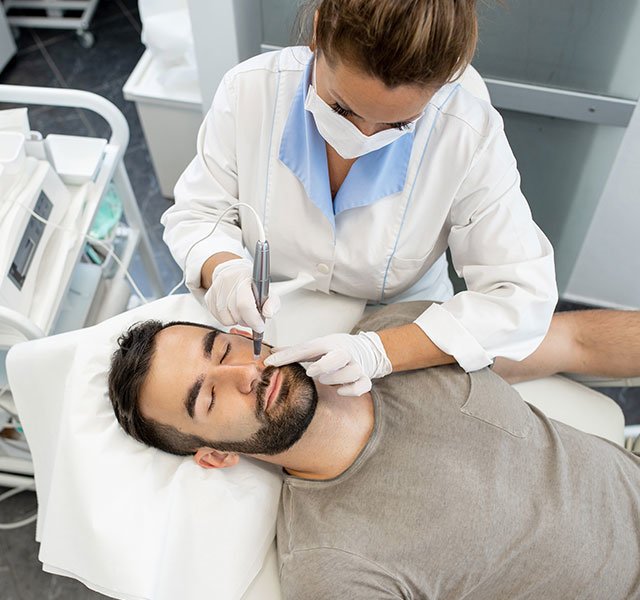Microneedling is getting a lot of attention in the dermatology world. It's also a frequent topic among beauty influencers, and more companies are also advertising at-home microneedling products. But does puncturing the upper layers of the skin with tiny needles really result in a younger look? According to Henry Ford dermatologist Jungho Kwon, M.D., it’s certainly a possibility.
“The hope is that using these tiny, sterile needles on the skin can help reduce the appearance of fine lines and wrinkles, minimize acne scarring, and help reverse some of the hyperpigmentation that occurs with skin aging or skin conditions like melasma,” says Dr. Kwon.
Frequently Asked Questions About Microneedling
Microneedling dates back to the mid-1990s, but it has gained more traction in recent years thanks to new technology and options for home use. There’s still some mystery and misinformation surrounding the technique. Here, Dr. Kwon answers frequently asked questions about this seemingly simple dermatology treatment.
Q: What is microneedling?
Dr. Kwon: With microneedling, a technician or dermatologist punctures the upper layers of the skin with tiny, sterile needles. These micro injuries in the skin cause the body’s natural healing process to kick in, triggering the production of collagen and other growth and healing factors. So microneedling basically unleashes your body’s own regenerative process.
Q: What can I expect during — and after — a microneedling session?
Dr. Kwon: You’ll arrive about an hour before the appointment so your dermatologist can apply a topical numbing cream to your face. Once your skin is numb, you’ll lie on a table and the doctor will use either a roller covered in fine needles (a dermaroller) or an electric pen to puncture the skin on your face with hundreds of tiny holes. Some people say the process feels like someone is rubbing sandpaper across your face. Others notice only mild discomfort. In most cases, you will experience some redness, inflammation and bruising after the treatment. Your skin will probably be red and dry for about a week. It may even peel. After that, you’ll begin to notice a subtle improvement in your skin’s appearance.
Q: What types of creams, serums and potions are part of the treatment?
Dr. Kwon: Microneedling sometimes includes application of serums and medications. Since the process opens up the skin, topical treatments such as Retin-A and vitamin C can penetrate more deeply.
Q: Which conditions respond to microneedling?
Dr. Kwon: Microneedling is most often used to treat fine lines, wrinkles and sun-damaged skin. It can also improve the appearance of scars from acne and other skin conditions.
Q: What are the side effects?
Dr. Kwon: Side effects are typically mild and include bruising and irritation of the treated areas. Skin discoloration may occur, especially among people who have darker skin, but this usually goes away within a few days. In rare cases, microneedling may lead to infection and adverse reactions to topical medications applied during treatment.
Q: Are microneedling devices designed for home use effective?
Dr. Kwon: Dermatologists use sterile, high-powered microneedling devices. The needles on home devices are short and blunt so they’re more comfortable, but this makes them less effective than office tools. In fact, home devices act almost like exfoliators in terms of their effects. If you’re going to try a home microneedling device, be sure to thoroughly clean it before and after each use, especially if it punctures the skin.
Q: Is there anyone who should NOT do microneedling?
Dr. Kwon: While microneedling is much less invasive than cosmetic procedures such as deep chemical peels and laser resurfacing, it’s not appropriate for everyone. People who have active skin infections, skin pigmentation conditions or active acne, and those who have a tendency to develop keloids should avoid treatment.
Safe Microneedling
While you may be able to get microneedling treatments at a med-spa or even a beauty salon, it’s important to make sure that anyone who works on your skin is board-certified in dermatology — or that the clinic is run by board-certified dermatologists or plastic surgeons.
“The best way to preserve the look and feel of your skin is to be proactive,” says Dr. Kwon. “Wear sunscreen, wash your face with gentle cleanser and see a dermatologist when you notice any changes in your skin.”
To find a doctor or dermatologist at Henry Ford, visit henryford.com or call 1-800-HENRYFORD (436-7936).
Dr. Jungho Kwon is senior staff dermatologist and sees patients at Henry Ford Medical Centers in Troy and West Bloomfield (on Farmington Road).



